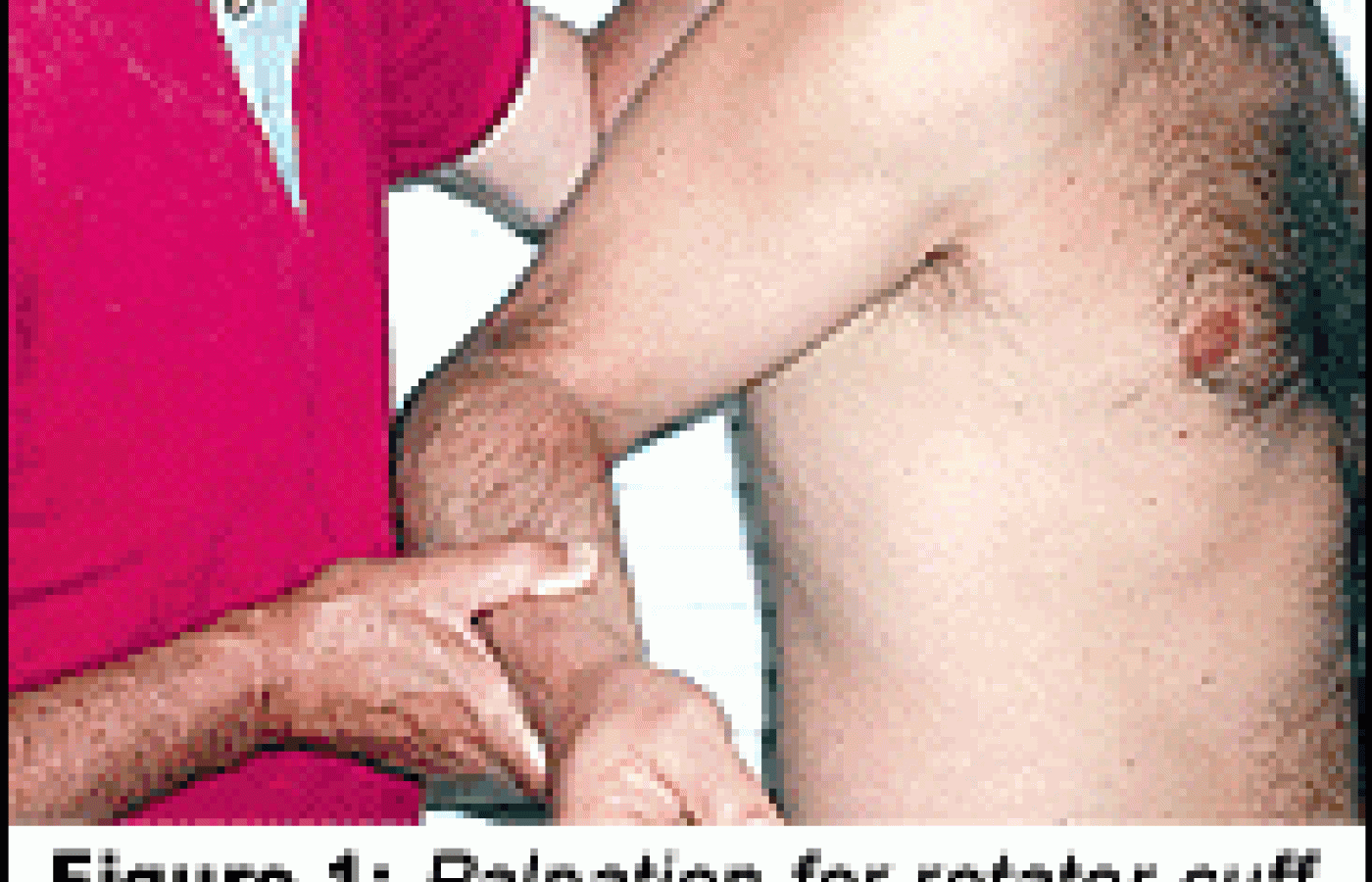New York's highest court of appeals has held that no-fault insurers cannot deny no-fault benefits where they unilaterally determine that a provider has committed misconduct based upon alleged fraudulent conduct. The Court held that this authority belongs solely to state regulators, specifically New York's Board of Regents, which oversees professional licensing and discipline. This follows a similar recent ruling in Florida reported in this publication.
Palpation Test for Diagnosis of Rotator Cuff Tears
Wolf and Agrawal1 used "trans-deltoid palpation" to diagnose full thickness rotator cuff tears and compared their palpation prospectively for 109 consecutive patients who underwent shoulder arthroscopy. They performed a retrospective analysis on the data to assess the accuracy of the palpation method. The overall diagnostic accuracy of this palpation method was 96.3 percent. The authors used the method of palpation originally described by Codman.2 The test is described as follows:
- The patient stands with the involved arm relaxed and dangling at the side.
- The examiner stands behind the patient and holds the patient's proximal forearm with the patient's elbow flexed 90 degrees.
- The shoulder is brought back into full extension, which allows greater palpation of the humeral head and tendons inserting into the greater tuberosity.
- The other hand is placed in front of the anterior acromion in the space before the greater tuberosity. For practitioners familiar with my soft tissue course, this is the best position to palpate and treat the supraspinatus tendon as it inserts into the greater tuberosity.
- While palpating this area with the shoulder in the fully relaxed extension position, the patient's forearm is moved to create internal and external shoulder rotation. Moving the shoulder in internal and external rotation allows the practitioner to palpate the other cuff tendons, i.e., subscapularis and infraspinatus.
- In a full rotator cuff tear, the eminence of the greater tuberosity will feel quite prominent, and the torn area will feel like a "sulcus," "rent" or soft-tissue defect that has avulsed from the tuberosity. Palpating the anterior and posterior margins of the cuff tear may elicit an avulsed edge. According to Wolf, et al. "Failure to palpate an avulsed edge is indicative of significant retraction."1
- Compare with the opposite normal side.
The authors1 state that in a partially torn or atrophic cuff, an eminence may be palpated, but the "rent" or sulcus is less prominent. When a calcific deposit is present, there is tenderness, but no sulcus. Small, nonretracted full thickness defects in the cuff and partial tears are more difficult to detect with this palpatory test. Tears on the bursal side of the tendon are the easiest to palpate. If patients have a thick adipose layer surrounding the acromion, it may be difficult to palpate the defect.
With the shoulder abducted by the practitioner, to 90 degrees if there is crepitus while the shoulder is rotated internally and externally, this is considered a sign of supraspinatus tearing in both partial-thickness and full-thickness tears. The crepitation on rotation is due to the abrasion of the torn tendon margins against the coracoacromial arch (abrasion sign).3


The drop-arm and lag-sign tests might indicate a rupture. A partial rupture will be more painful than a full-thickness rupture in which the nerves are completely separated.
References
- Wolf EM, Agrawal V. Transdeltoid palpation (the rent test) in the diagnosis of rotator cuff tears. J Shoulder Elbow Surg 2002;10(5).
- Codman EA. The Shoulder: Rupture of the Supraspinatus Tendon and Other Lesions in or About the Subacromial Bursa, chapter V. Original edition. Boston: Thomas Todd; 1934. p. 123-77. Reprint edition. Melbourne (FL): Krieger; 1984.
- Matsen FA, Lippitt SB, Sidles JA, Harryman DT. Practical evaluation and management of the shoulder. Philadelphia: W.B. Saunders: 1994, in Hammer WI. Functional Soft Tissue Examination & Treatment by Manual Methods: New Perspectives, 2nd edition, Aspen publishers, Gaithersburg, MD.
Warren Hammer,MS,DC,DABCO
Norwalk, Connecticut



